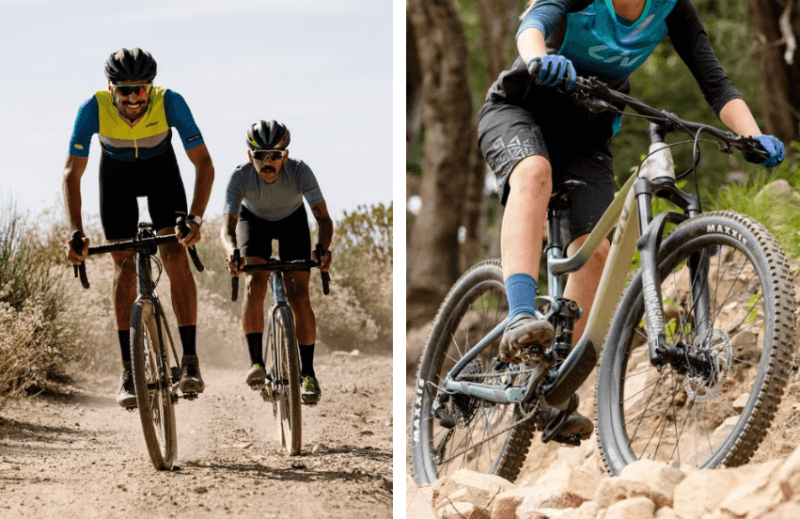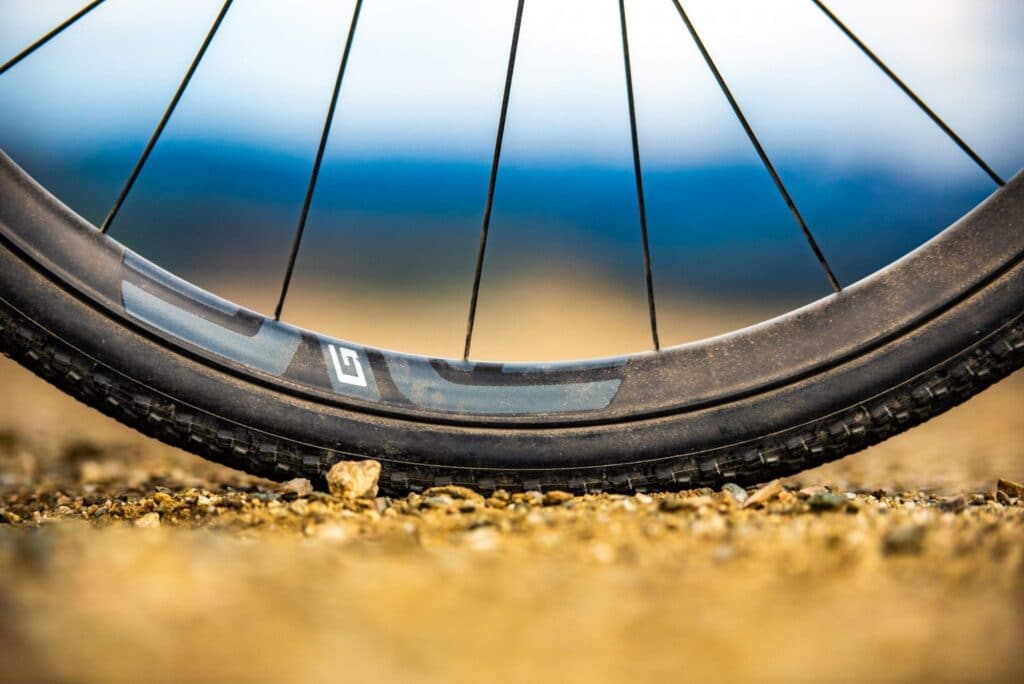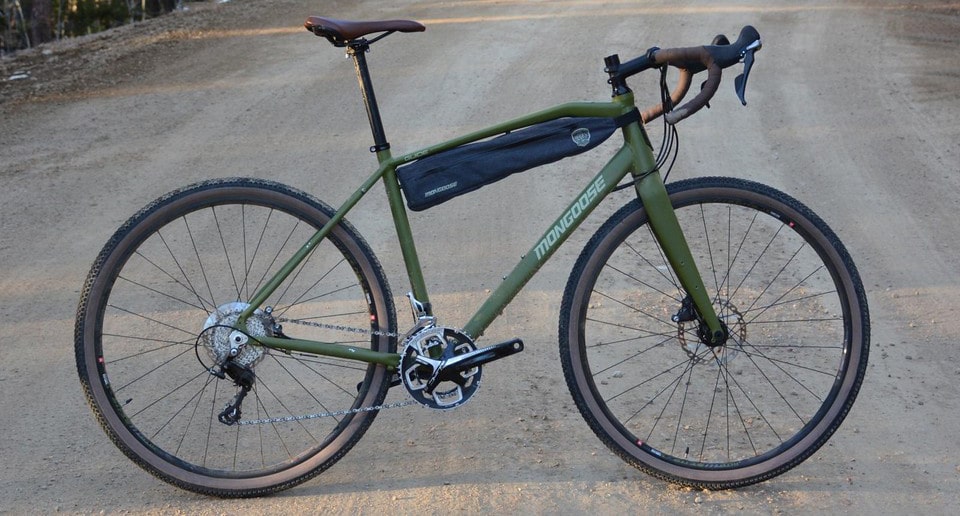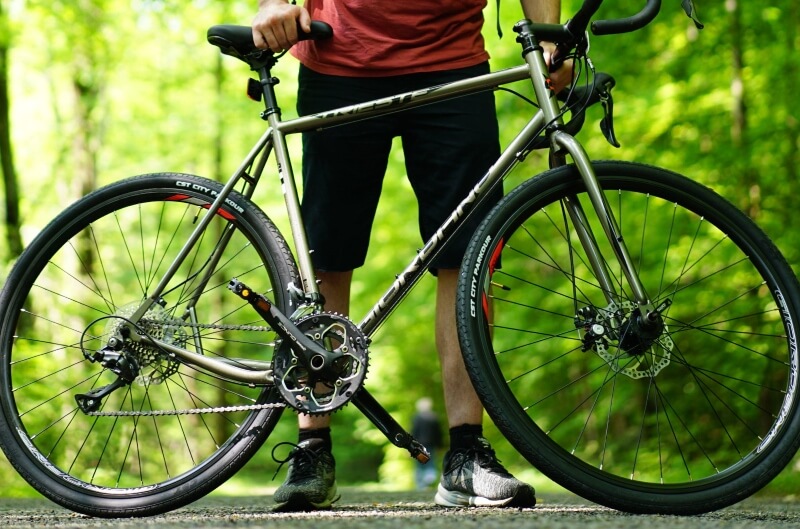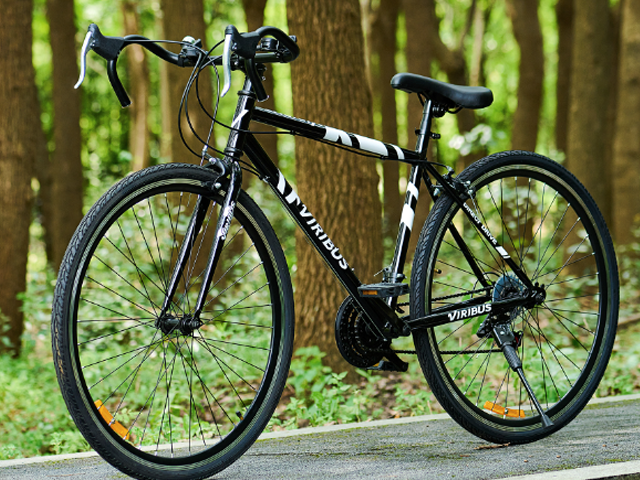- Trails
-
Bikes
-
Gear
-
Tips & Tricks
-
About us


There are numerous performance results that cyclers can perceive from gravel bike’s tire pressure gauges. However, not all cyclists are conversant with tire pressure’s effect on their bike’s performance, particularly for beginners.
Most people opt for contemporary technologies in an attempt to enhance their bike’s performance. Nonetheless, you may notice different results after tweaking your bike’s pressure. This is because tires are the bicycle parts that are in outright contact with the road surface.
Experienced cyclists may be able to estimate their gravel bike tires PSI easily. This may be through a pinch of the tire. Though it is an overlooked and estimated scope in cycling, familiarizing yourself with such tips can elevate your cycling skills. If you value a low-cost entry and uncompromised quality, there are great gravel bikes that have it.
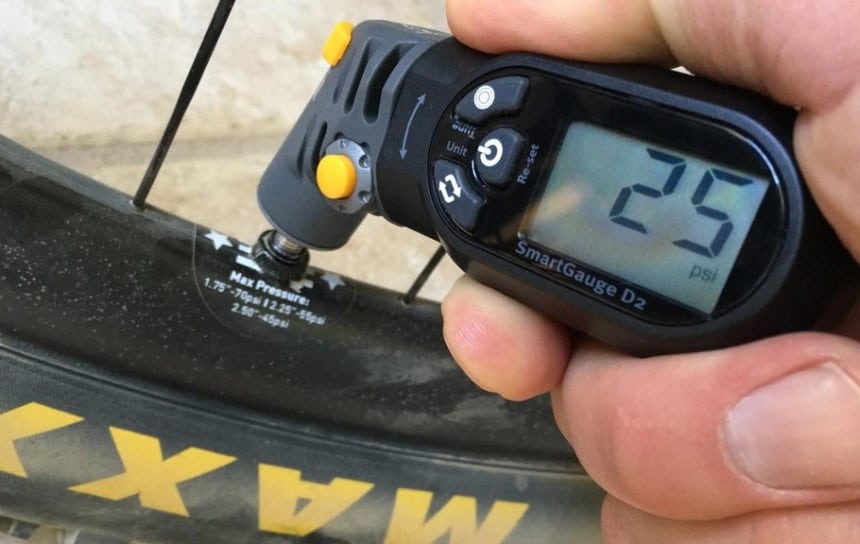
Tire pressure provides a huge turnaround in your bike’s performance. Checking your tire pressure is the easiest of all bike maintenance practices. Some cyclists try to upgrade the performance by equipping a lighter set of wheels or customizing using fancy electronic shifting. But before all that, let’s look at the basics of bike tire pressure.
The more the PSI (pounds per square inch), the harder the tire becomes. So if you have just purchased gravel, mountain, or any other bike model, there are discrete factors to consider regarding PSI. This is because every bike has a recommended PSI. Most recommendations are stamped on the rubber wall to avoid miscalculations.
The standard bike tire pressure gets derived from projected uses and the ideal range. When you are wondering what psi your bike tires should be, you should figure out the impacts that may occur due to different pressure gauges. High pressure imposes a risk of blowing off, while low pressure can cause excessive tire rolling, especially during cornering. Low pressure also affects bike handling as it causes the front-end resistance to steering input.
Whether you choose low, normal, or high bike air pressure, there are different implications that you will notice on your bike’s performance. Such factors include:
Athletes prefer soft shoes rather than hard shoes because they are more comfortable. Additionally, it is rare to incur injuries while running on soft shoes. It also applies to bicycles in that a low-pressure tire absorbs shocks and vibrations perceived from the ground. It also absorbs more force impacted from the pedal.
On the other hand, highly rigid tires channel the vibrations to the bike, suspensions, and cyclists. This may cause damage to parts of the bicycle and even loosening of nuts. Furthermore, due to the frequent shocks on your body, you may feel exhausted and worn out after a long ride.
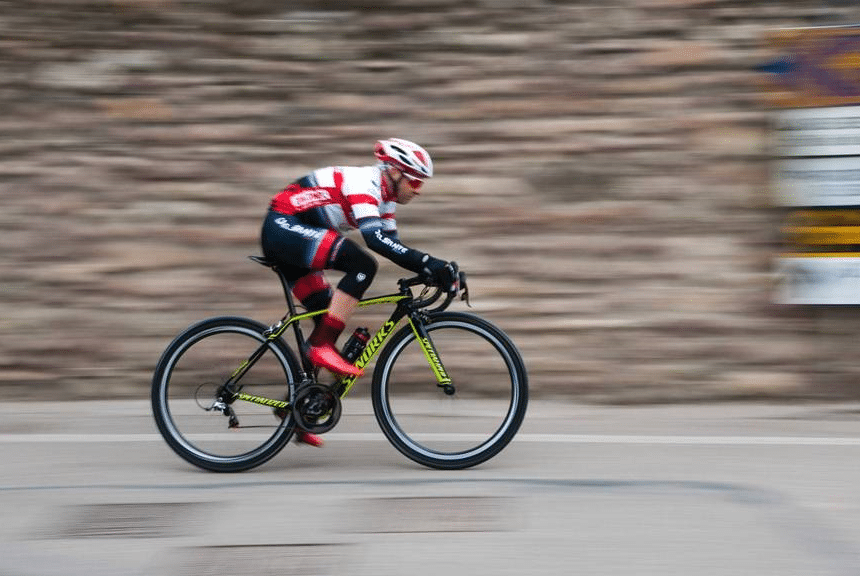
Applying higher pressure will lead to a lower rolling distance. It happens as the tires will be harder. Thus, it will escalate the bike’s speed. However, this occurs when cycling on less bumpy roads and bikes that have no suspension. Sturdy and versatile bikes can be ideal in such surface conditions.
In comparison to automobiles, low tire pressure spikes fuel consumption. The same principle applies to bikes, but the power here applies to physical energy. Power will be absorbed by the fact that the tire deforms easily. This will force you to engage more power on the pedal to cater to the power absorbed by the tire’s shape.
Under normal air pressure conditions, the tire’s treads should evenly contact the ground during cycling, including even the sides of the tire. When you apply more pressure, the central section of the tire will have greater pressure causing more contact than the sides of the tire.
This will lead to an unbalanced contact with the surface causing more tears on the middle area. However, you should note that also low-pressure detriments your tire’s life. This is because when a bike has low pressure, the tire folds itself during motion. Also, when braking and cornering, the tire gets exposed to immense pressure. This is why at some point, you may observe cracks developing on your tire.
The grip is enhanced with the more contact a tire has with the surface. High-pressure tires have little traction as there is minimal contact with the ground. Low pressure is vital when looking for reliable traction. For instance, when cornering, the bike tilts towards the direction of the turn. This will cause the tire to change its orientation. Hence, the tire will have more contact with the direction that the bike is cornering.
It also applies to braking. For a quick stop, the tires should have maximum contact with the surface. A low-pressure tire has higher tread contact with the ground, which is efficient for braking. Higher pressure may cause frequent slips as there is less contact of the treads with the surface.
Note that it may also affect your control. For example, forward momentum may cause complications during cornering. It is since momentum opposes braking.
There are other inevitable and crucial components that cyclers should incorporate when dealing with ideal bike tire pressure. They include:
It does not require intensive research to be conversant with the impact of your weight Trusted Source Influence of tyre pressure and vertical load on coefficient of rolling resistance and simulated cycling performance | ResearchGate The coefficient of rolling resistance (C) for pneumatic tyres is dependent on hysteresis loss from tyre deformation which is affected by the vertical force applied to the tyres (F) and the tyre inflation pressure (P). www.researchgate.net and luggage on your tire’s pressure. The more the load on the bicycle, the higher the pressure it perceives. Hence, you are required to regulate the pressure. It will help your bike remain within appropriate standards after receiving a heavy load.
Different people have distinct cycling styles. For instance, some people love cycling fast and taking jumps as they enjoy their rides. Others are just cool with minimal jumps and collisions. It highly determines the ideal bike tire pressure.
For instance, mountain bike tires pressure should be from 22psi (1.5 bar) to 35psi (2.4 bar) with slightly lower pressure in the front tires, which majorly depends on body position. You will have less weight impact on the front tire, which allows you to take corners quickly. You will also have more traction that is essential in braking and greater traction.
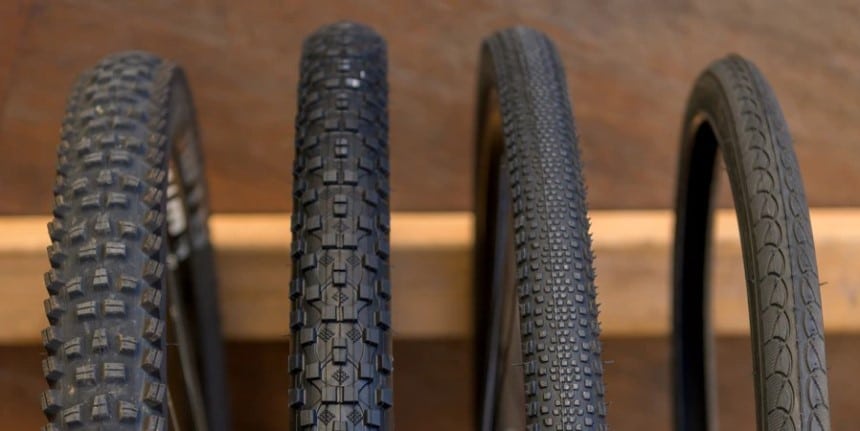
Different tires have discrete widths, which differentiates the air volume specifications. Wider tires can accommodate more air volume. Hence, wider tires can offer more comfort and traction Trusted Source Tyre Volume and Pressure Effects on Impact Attenuation during Mountain Bike Riding | Hindawi Exposure to impacts and vibrations has been shown to be detrimental to cross country mountain bike performance and health. www.hindawi.com while riding at lower PSI.
This is not similar to skinny race bike tires. Riding it at lower pressures exposes you to greater risk because it has much less volume; thus, it requires more air to curb bottoming out. For example, a 2.5″ enduro tire will ride comfortably at 20 PSI.
Also, remember that 27.5 inch tires, for example, will have greater rolling resistance than a 29 -inch gravel tires, and should be inflated more.
When choosing your ideal tire pressure, you should also consider the type of material of a bicycle tire. Also, this applies when changing the tire as there is a probability of altering the previous air pressure measurement.
Tires with an elevated TPI (Threads per inch) have added flexibility instead of ones with a lower TPI. Tires developed using rubber material are ideal for high pressure as they also have boosted puncture protection.
On the other hand, Schwalbe and Maxxis bicycle tires have proprietary formulas and materials for developing their tires. Hence, you should highly consider the material and structure of your tire before determining the ideal pressure gauge.
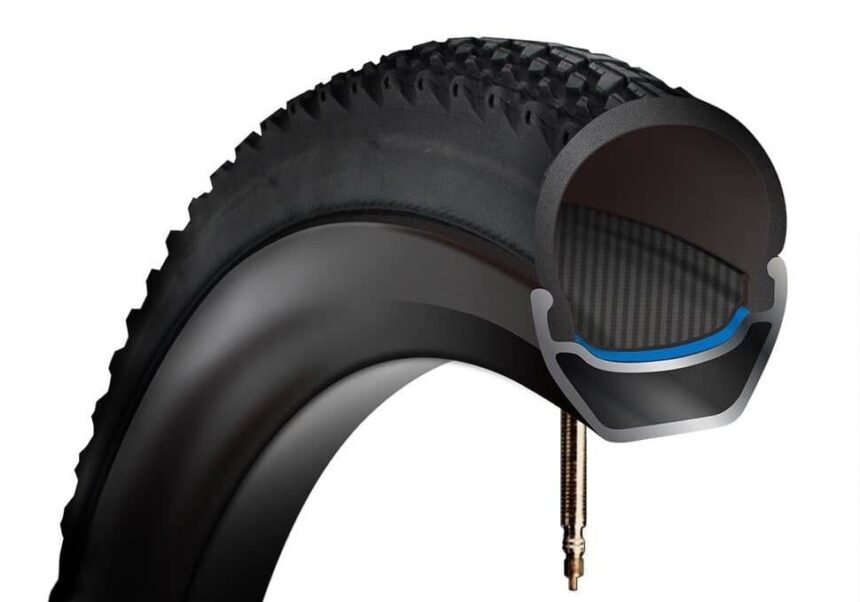
The tubeless technology is spreading super fast and has stretched to cover even bicycles. This implies how you choose your ideal pressure.
They do not depend on an inner tube. In this regard, you will be required to dwell on little pressure. Additionally, you will have fewer worries about the inner tube getting punctured. Tubeless tires have a lower rolling resistance as compared to tires with tubes. Hence, the ideal gravel bike tubeless tire pressure will differ from that with an inner tube.
Tubeless tires will offer enhanced traction and comfortability and fewer chances of a puncture, making them ideal for mountain bikes trails and gravel surfaces.
While riding, you can encounter some new terrains which may not be as expected. Nonetheless, such terrains will affect how you choose your ideal pressure gauge. It may include off-road areas that may tamper with your comfortability. Outdoor gravel bikes have been designed with a wide array of features to suit adventurous rides.
Pressure gauge may also be significant when riding on bumpy terrain. You can feel the tension from the bumps, especially when you suddenly hit a rock. You may consider fitting in bicycle engine kits that will last longer. The BBR Tuning 5G Pull Start Bicycle Engine Kit-4 Stroke is a tough and reliable choice that will deliver long lasting services.
It should be noted that gravel bike tire pressure on pavements and smooth roads does not have a significant impact.
Riding in wet weather may require adjustments too. This is because water may tamper with the surface leading to a slippery terrain. Lowering the pressure will ensure that the tire has a better grip and evade any possibilities of slipping.
Every tire manufacturer has a pressure limit that governs smooth operations by your tire. It is also based on a number of factors such as weight, tire width, terrain, and other crucial factors.
When you check on the side of your bicycle’s tire, there is a label that recommends the ideal pressure gauge that the tire can accommodate. One bar reciprocates 14.5 PSI.
The maximum pressure indicates the maximum air pressure in your bike that the tire can withstand and this is a safe parameter that the manufacturer recommends. In case you exceed that, the tire will get bends or even burst. However, you may exceed with a few PSI but considerably.
Although typical road bikes depend on a PSI of 80 to 120, the approximate gravel tires pressure ranges between 20 and 50 PSI.
Optimal pressure cannot be similar and perfect for everyone. However, based on your gravel riding experience, you can gauge the ideal optimal tire pressure. For instance, your balancing may also determine the amount of air you pump in your gravel tires.
In some situations, 50 PSI becomes a high range for a gravel tire. For cyclists with a rim narrower than 21mm, adding extra PSI to the recommended limits cannot harm. You can also use gravel bike tire pressure calculators like Vittoria pressure calculator or any other to estimate the ideal optimal pressure for your bike.
Having complete and accurate know-how on the right tire pressure gauges can help enhance your riding experience because tire pressure is highly related to rims and wheelsets. Below is an off-road bike tire pressure chart that will aid in monitoring your tires’ conditions:
Gravel Bike Tire Pressure for 21 MM Rims
| 28-32 MM | 32-35 MM | 42-25 MM | |
| 90 lbs | 26psi | 23psi | 18psi |
| 100 lbs | 28psi | 26psi | 20psi |
| 110 lbs | 31psi | 28psi | 22psi |
| 120 lbs | 34psi | 31psi | 24psi |
| 130 lbs | 36psi | 33psi | 25psi |
| 140 lbs | 38psi | 35psi | 27psi |
| 150 lbs | 40psi | 37psi | 28psi |
| 160 lbs | 42psi | 38psi | 30psi |
| 170 lbs | 44psi | 40psi | 31psi |
| 180 lbs | 46psi | 42psi | 32psi |
| 190 lbs | 47psi | 43psi | 33psi |
| 200 lbs | 48psi | 44psi | 34psi |
| 210 lbs | 50psi | 45psi | 35psi |
| 220 lbs | 51psi | 46psi | 36psi |
| 230 lbs | 52psi | 47psi | 37psi |
| 240 lbs | 52psi | 48psi | 37psi |
| 250 lbs | 53psi | 49psi | 38psi |
Gravel Bike Tire Pressure for 23MM Rims
| 33-35mm | 35-38mm | 38-42mm | 42-45mm | |
| 90lbs | 23psi | 21psi | 20psi | 18psi |
| 100lbs | 25psi | 24psi | 22psi | 20psi |
| 110lbs | 28psi | 26psi | 24psi | 21psi |
| 120lbs | 30psi | 28psi | 26psi | 23psi |
| 130lbs | 32psi | 30psi | 27psi | 25psi |
| 140lbs | 34psi | 32psi | 29psi | 26psi |
| 150lbs | 36psi | 34psi | 31psi | 28psi |
| 160lbs | 38psi | 35psi | 32psi | 29psi |
| 170lbs | 39psi | 37psi | 34psi | 30psi |
| 180lbs | 41psi | 38psi | 35psi | 31psi |
| 190lbs | 42psi | 39psi | 36psi | 33psi |
| 200lbs | 43psi | 41psi | 37psi | 33psi |
| 210lbs | 44psi | 42psi | 38psi | 34psi |
| 220lbs | 45psi | 43psi | 39psi | 35psi |
| 230lbs | 46psi | 43psi | 39psi | 36psi |
| 240lbs | 47psi | 44psi | 40psi | 36psi |
| 250lbs | 47psi | 45psi | 41psi | 37psi |
Gravel Bike Tire Pressure for 25MM Rims
| 28-32mm | 32-35mm | 38-42mm | 42-45mm | 47-55mm | |
| 90lbs | 24psi | 22psi | 19psi | 17psi | 13psi |
| 100lbs | 27psi | 25psi | 21psi | 19psi | 15psi |
| 110lbs | 29psi | 27psi | 23psi | 21psi | 16psi |
| 120lbs | 32psi | 29psi | 25psi | 23psi | 17psi |
| 130lbs | 34psi | 31psi | 27psi | 24psi | 19psi |
| 140lbs | 36psi | 33psi | 28psi | 26psi | 20psi |
| 150lbs | 38psi | 35psi | 30psi | 27psi | 21psi |
| 160lbs | 40psi | 37psi | 31psi | 28psi | 22psi |
| 170lbs | 42psi | 38psi | 33psi | 30psi | 23psi |
| 180lbs | 43psi | 40psi | 34psi | 31psi | 24psi |
| 190lbs | 45psi | 41psi | 35psi | 32psi | 24psi |
| 200lbs | 46psi | 42psi | 36psi | 33psi | 25psi |
| 210lbs | 47psi | 43psi | 37psi | 33psi | 26psi |
| 220lbs | 48psi | 44psi | 38psi | 34psi | 26psi |
| 230lbs | 49psi | 45psi | 39psi | 35psi | 27psi |
| 240lbs | 50psi | 46psi | 39psi | 35psi | 27psi |
| 250lbs | 50psi | 46psi | 40psi | 36psi | 28psi |
Gravel Bike Tire Pressure for 27MM Rims
| 38-42mm | 42-45mm | 47-55mm | |
| 90lbs | 19psi | 17psi | 13psi |
| 100lbs | 21psi | 19psi | 14psi |
| 110lbs | 23psi | 20psi | 16psi |
| 120lbs | 24psi | 22psi | 17psi |
| 130lbs | 26psi | 24psi | 18psi |
| 140lbs | 28psi | 25psi | 19psi |
| 150lbs | 29psi | 26psi | 20psi |
| 160lbs | 31psi | 28psi | 21psi |
| 170lbs | 32psi | 29psi | 22psi |
| 180lbs | 33psi | 30psi | 23psi |
| 190lbs | 34psi | 31psi | 24psi |
| 200lbs | 35psi | 32psi | 24psi |
| 210lbs | 36psi | 33psi | 25psi |
| 220lbs | 37psi | 33psi | 26psi |
| 230lbs | 37psi | 34psi | 26psi |
| 240lbs | 38psi | 34psi | 27psi |
| 250lbs | 39psi | 35psi | 27psi |
In most cases, the front tire should have less pressure as compared to the rear one. The rear tire should have about 10% more pressure than the front one as it gives your more control, especially when braking and taking corners.
It helps in absorbing any possible pressure from bumps and road hazards without much rolling distance. However, you may choose to dwell on any other form of pressure criteria. Your tire choice and riding style may influence this.
Having a bicycle can not only be fun but also a form of exercise. Hence, following all the maintenance practices can ensure you enjoy your ride longer. This includes even the most overlooked practice, the gravel bike tire pressure.
As discussed above, a tires pressure gauge has numerous impacts on your overall bike’s performance. Multiple conditions also determine the recommended state of pumping air into your tire, including such factors as the material of the tire, cycling style, tire width, terrain, and tubeless tires.
